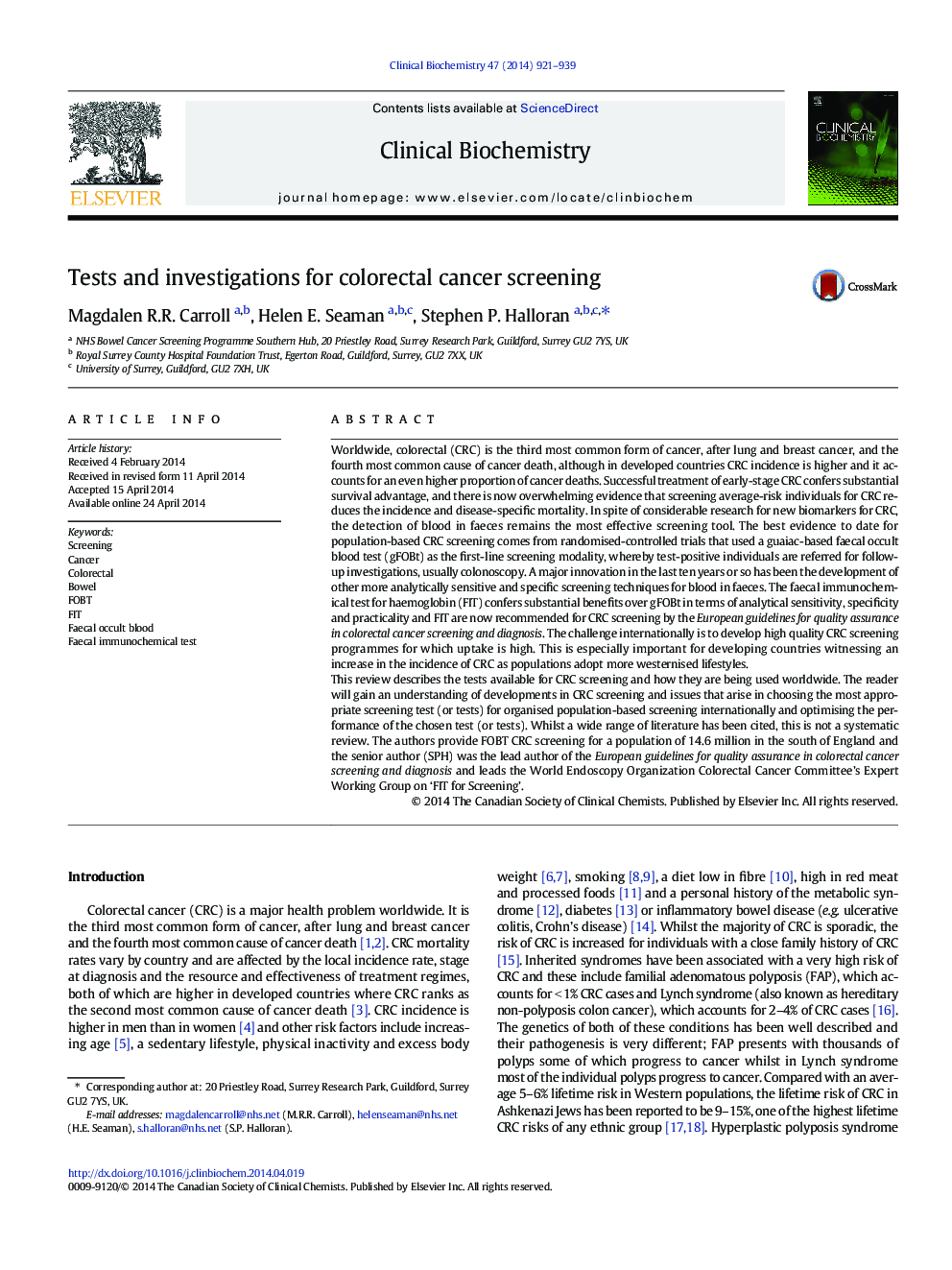| کد مقاله | کد نشریه | سال انتشار | مقاله انگلیسی | نسخه تمام متن |
|---|---|---|---|---|
| 1968636 | 1538873 | 2014 | 19 صفحه PDF | دانلود رایگان |
• The case for CRC population screening is currently stronger than for any other cancer.
• High quality colonoscopy is the best investigation to detect and characterise CRC.
• The presence of blood in faeces remains the most effective biomarker for the detection of CRC.
• FIT provide the most sensitive and specific screening tool for CRC and advanced adenomas.
• Quantitative FIT analysis can contribute to and optimise multivariate risk models for CRC.
Worldwide, colorectal (CRC) is the third most common form of cancer, after lung and breast cancer, and the fourth most common cause of cancer death, although in developed countries CRC incidence is higher and it accounts for an even higher proportion of cancer deaths. Successful treatment of early-stage CRC confers substantial survival advantage, and there is now overwhelming evidence that screening average-risk individuals for CRC reduces the incidence and disease-specific mortality. In spite of considerable research for new biomarkers for CRC, the detection of blood in faeces remains the most effective screening tool. The best evidence to date for population-based CRC screening comes from randomised-controlled trials that used a guaiac-based faecal occult blood test (gFOBt) as the first-line screening modality, whereby test-positive individuals are referred for follow-up investigations, usually colonoscopy. A major innovation in the last ten years or so has been the development of other more analytically sensitive and specific screening techniques for blood in faeces. The faecal immunochemical test for haemoglobin (FIT) confers substantial benefits over gFOBt in terms of analytical sensitivity, specificity and practicality and FIT are now recommended for CRC screening by the European guidelines for quality assurance in colorectal cancer screening and diagnosis. The challenge internationally is to develop high quality CRC screening programmes for which uptake is high. This is especially important for developing countries witnessing an increase in the incidence of CRC as populations adopt more westernised lifestyles.This review describes the tests available for CRC screening and how they are being used worldwide. The reader will gain an understanding of developments in CRC screening and issues that arise in choosing the most appropriate screening test (or tests) for organised population-based screening internationally and optimising the performance of the chosen test (or tests). Whilst a wide range of literature has been cited, this is not a systematic review. The authors provide FOBT CRC screening for a population of 14.6 million in the south of England and the senior author (SPH) was the lead author of the European guidelines for quality assurance in colorectal cancer screening and diagnosis and leads the World Endoscopy Organization Colorectal Cancer Committee’s Expert Working Group on ‘FIT for Screening’.
Journal: Clinical Biochemistry - Volume 47, Issues 10–11, July 2014, Pages 921–939
